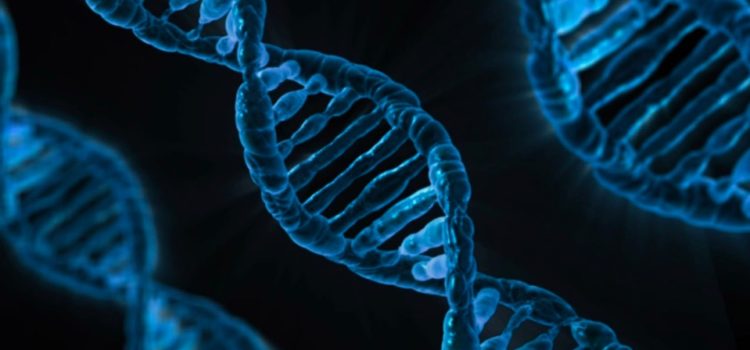

This article is an excerpt from the Shortform book guide to "The Selfish Gene" by Richard Dawkins. Shortform has the world's best summaries and analyses of books you should be reading.
Like this article? Sign up for a free trial here .
What is The Selfish Gene book about? How does Richard Dawkins’ The Selfish Gene reframe the purpose of life?
According to Richard Dawkins in The Selfish Gene book, the purpose of life is to ensure the survival of genes. This means that every gene is functioning in a way that is in its own self-interest, hence the term “selfish gene.”
Read on for more about The Selfish Gene book and its key points.
Richard Dawkins’ The Selfish Gene Book
The Selfish Gene book shows that all forms of life on Earth begin with genes, and that the purpose of life is to make sure those genes survive. While many biologists would say that the purpose of life is to survive and reproduce at the organismal level, Dawkins argues that there are things that the organismal approach can’t explain, such as the prevalence of sexual reproduction when it leads to offspring that are substantially different from the parents. Therefore, it makes more sense to look at life from the perspective of a selfish gene doing anything it can to reproduce itself because, outside of random mutations, genes pass from one generation to the next unchanged.
Any form of life anywhere in the universe must begin with some type of replicating molecule. That molecule first arises by chance, as atoms randomly bump into each other in some primordial soup. Once formed, however, that replicator quickly copies itself and spreads throughout its environment. Copying itself is that molecule’s only purpose, according to Richard Dawkins’ The Selfish Gene book.
Sooner or later, the environment runs out of freely available resources, and then the molecules will have to compete. Those that can’t effectively replicate themselves will be squeezed out of the population, while those that can undergo various mutations during the copying process. Some of those mutations, by pure chance, are helpful, and the molecules carrying them replicate more effectively than others. New mutations build on top of old ones to create ever-more effective and elaborate vehicles to carry those replicators. On Earth, those replicators became DNA and evolution led to the complex organisms we have today.
Genes are like a blueprint for the bodies they create and inhabit. Genes can’t control their bodies directly, so they create structures like the brain and muscles to coordinate and execute all of the many processes required for life.
However, for all of the complex structures and systems they give rise to, genes are still replicator molecules doing whatever they can to keep replicating and survive through the generations. This is the meaning of “selfish gene,” and the reason all biology should be considered from the perspective of genes, not individuals.
Altruistic and Selfish Behaviors
While the driving force behind biology may be genes attempting to replicate, in modern times many must do so through the behaviors of their hosts. Behavior is how scientists describe specific actions that creatures take. A behavior is something quick and definite, so only animals can really be said to have them—some plants do move, but not in a fast or purposeful way.
Selfish behaviors in nature are easy to explain: Animals would naturally be expected to behave in ways that benefit themselves at the expense of others, given that the purpose of life is to survive and reproduce. However, altruistic behavior—helping others at cost to oneself—seems counterintuitive.
Group Selection
One possible explanation for altruistic behavior, according to Richard Dawkins’ The Selfish Gene book, is group selection: the idea that natural selection acts on groups of creatures, rather than on the individual level. While the commonly accepted theory today is that individuals compete for the ability to reproduce, group selection says that animals will instinctively act for the good of their local population, or even their entire species. If true, it would make altruistic behavior very easy to explain; risking oneself to help others of one’s species would then be the default, not the exception.
However, group selection is a fatally flawed theory. There are many ways to rebut it, but the simplest is to recognize that a population of altruistic individuals can be easily exploited by a selfish one. The selfish individual will accept all the help that other members of the population offer, while taking on no risks or costs to itself. Therefore, a selfish individual in an altruistic population will inevitably be more successful than the average creature in that population.
That selfish creature would quickly spread its genes—and therefore its selfishness—until a large portion of the population turns selfish. In other words, the individual will succeed at the expense of the group, and therefore group selection can’t be true.
Gene Selection
The other explanation for altruistic behavior is gene selection. The key to understanding gene selection is recognizing that close relatives, by definition, share many of the same genes. For example, in a typical mammal that reproduces sexually, an individual’s offspring and siblings will both have 50% of its genes. However, there’s no way for a gene to actively recognize itself in another organism, so it has to play the odds. If another organism carries 50% of the same genes, then there’s a 50% chance that it carries a copy of the gene in question.
Therefore, from the perspective of a selfish gene, siblings and offspring should be considered 50% as valuable as the organism that gene happens to be in. So, to give an extreme example, if an organism could save more than two of its siblings or children by sacrificing its own life, selfish gene theory dictates that it should do so. Genes don’t need one particular organism to survive, as long as organisms likely to be carrying them are able to keep reproducing. That’s the core theory behind The Selfish Gene book.

———End of Preview———
Like what you just read? Read the rest of the world's best book summary and analysis of Richard Dawkins's "The Selfish Gene" at Shortform .
Here's what you'll find in our full The Selfish Gene summary :
- Why organisms don't matter, only genes do
- How all life forms begin with a replicating molecule
- How species need to balance aggression and pacifism to survive






